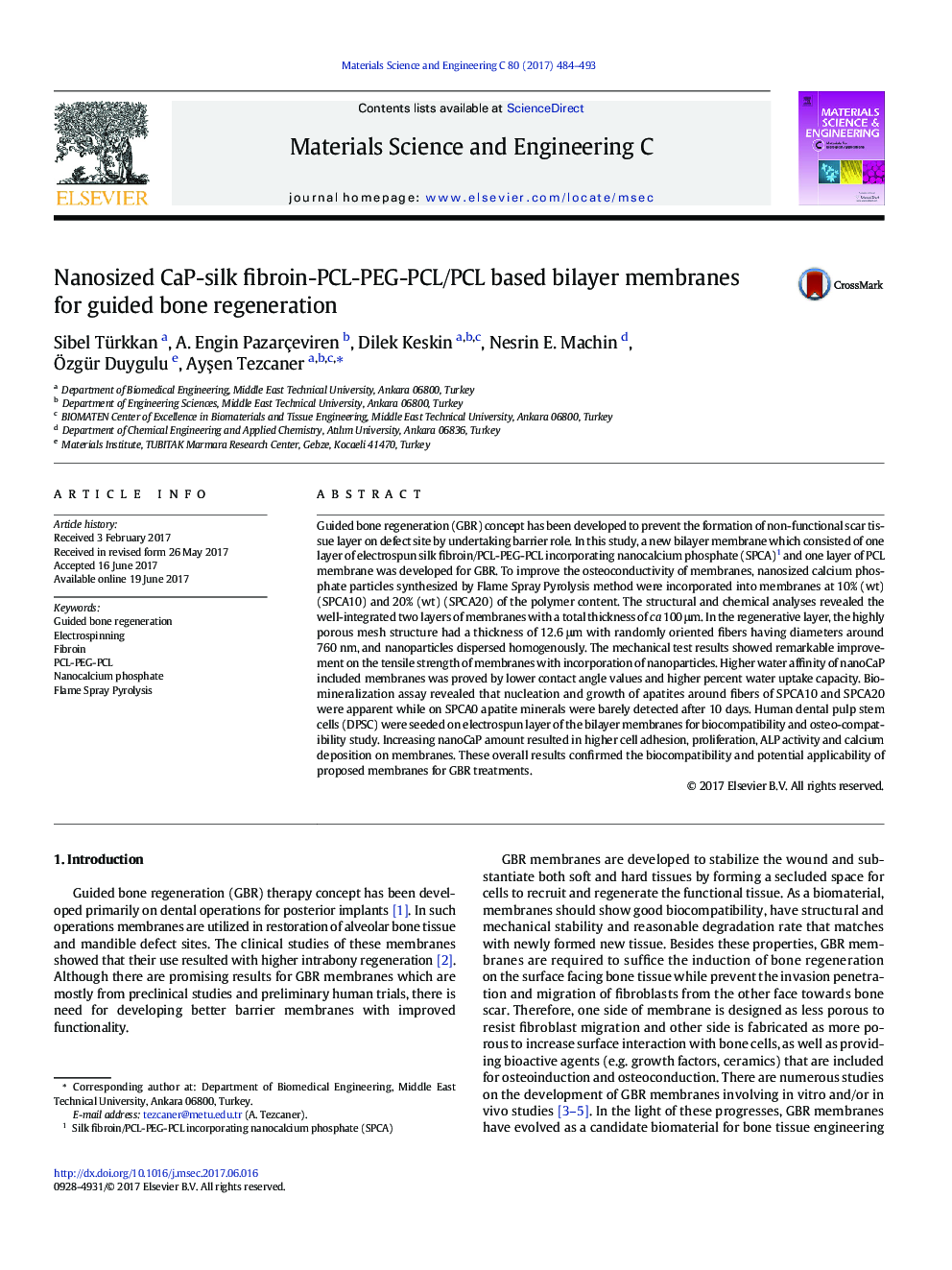| Article ID | Journal | Published Year | Pages | File Type |
|---|---|---|---|---|
| 5434343 | Materials Science and Engineering: C | 2017 | 10 Pages |
â¢Fabricated bilayer membrane was proposed for guided bone regeneration applications.â¢Silk fibroin/PCL-PEG-PCL electrospun and PCL casted bilayer was fabricated for the first time.â¢Synthesized nanocalcium phosphates assisted fiber integrity in electrospun layer.â¢Structural and chemical analyses proved that there is a stable and coherent structure of composite GBR bilayer membrane.â¢Nanoparticles included in the GBR bilayer membrane improved mechanical properties and biological properties significantly.
Guided bone regeneration (GBR) concept has been developed to prevent the formation of non-functional scar tissue layer on defect site by undertaking barrier role. In this study, a new bilayer membrane which consisted of one layer of electrospun silk fibroin/PCL-PEG-PCL incorporating nanocalcium phosphate (SPCA)1 and one layer of PCL membrane was developed for GBR. To improve the osteoconductivity of membranes, nanosized calcium phosphate particles synthesized by Flame Spray Pyrolysis method were incorporated into membranes at 10% (wt) (SPCA10) and 20% (wt) (SPCA20) of the polymer content. The structural and chemical analyses revealed the well-integrated two layers of membranes with a total thickness of ca 100 μm. In the regenerative layer, the highly porous mesh structure had a thickness of 12.6 μm with randomly oriented fibers having diameters around 760 nm, and nanoparticles dispersed homogenously. The mechanical test results showed remarkable improvement on the tensile strength of membranes with incorporation of nanoparticles. Higher water affinity of nanoCaP included membranes was proved by lower contact angle values and higher percent water uptake capacity. Biomineralization assay revealed that nucleation and growth of apatites around fibers of SPCA10 and SPCA20 were apparent while on SPCA0 apatite minerals were barely detected after 10 days. Human dental pulp stem cells (DPSC) were seeded on electrospun layer of the bilayer membranes for biocompatibility and osteo-compatibility study. Increasing nanoCaP amount resulted in higher cell adhesion, proliferation, ALP activity and calcium deposition on membranes. These overall results confirmed the biocompatibility and potential applicability of proposed membranes for GBR treatments.
